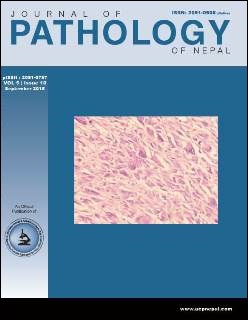A retrospective analysis of cervical smears for detection of precancerous lesions
DOI:
https://doi.org/10.3126/jpn.v5i10.15641Keywords:
LSIL, HSIL, AGC, Pap, Trichomonas, Human Papilloma VirusAbstract
Background: Diseases of the cervix are common in women. Detection of neoplastic lesions is of prime importance in the evaluation of cervical smears although their frequency is less than the non-neoplastic conditions. Reactive and inflammatory conditions, however, may mimic or obscure the dysplastic changes. The aim of this study was to evaluate the frequencies of various inflammatory, reactive and neoplastic lesions in the cervical smears.
Materials and Methods: This was a retrospective study of 150 cases of cervical smears collected from medical record section of the hospital and Department of Pathology at National Medical College from April 2013 to April 2015.
Results: Of 150 patients who underwent cervical cytology, only 15 cases (10%) had epithelial cell abnormalities. This was followed by reactive cellular changes associated with inflammation (16.7%), infections (5.3%) and atrophy (1.3%). Low grade squamous intraepithelial lesion (6%) was the most common epithelial cell abnormality followed by high grade squamous intraepithelial lesion (2%), atypical glandular cells (1.3%) and squamous cell carcinoma (0.7%).
Conclusion: Reactive changes including atrophy were the commonest finding. Squamous intraepithelial lesion was commonest finding among epithelial abnormalities. Glandular intraepithelial lesions and squamous cell carcinoma were also identified. Among infections Trichomoniasis and candidiasis were seen.
Downloads
Downloads
Published
How to Cite
Issue
Section
License
This license enables reusers to distribute, remix, adapt, and build upon the material in any medium or format, so long as attribution is given to the creator. The license allows for commercial use.




